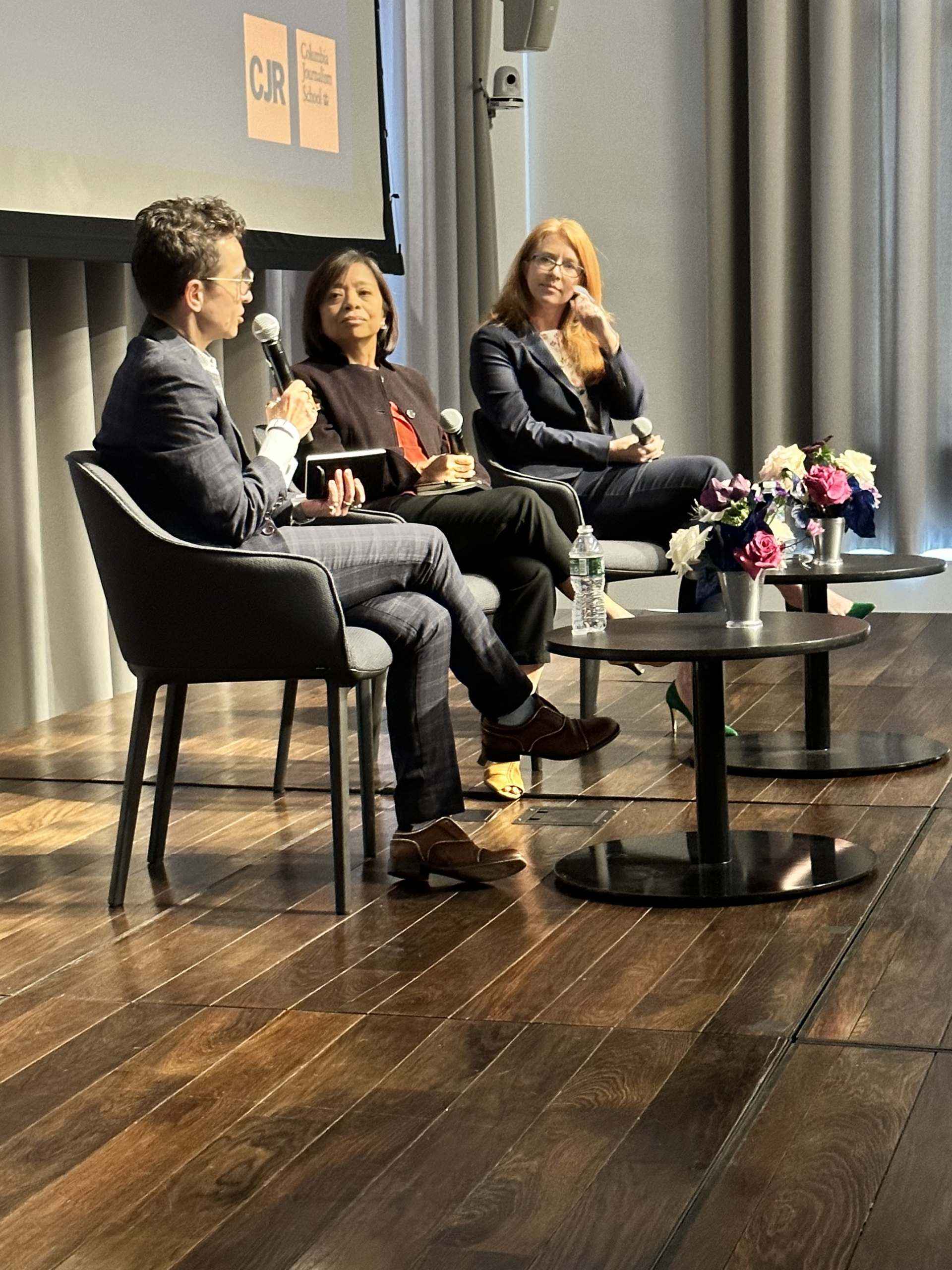What is the role of the press in protecting a fragile American democracy? How can reporters learn from history in covering the current moment? What should objectivity look like in response to misinformation and official lies?
This week, CJR and the Columbia Journalism School gathered the press and the public to begin addressing these challenges and to discuss how to restore faith in journalism at “FaultLines: Democracy: A conference on building a democratic press.” At the two-day event, panels of journalists, editors, and academics urged journalists to reconsider their understanding of American democracy at its most fundamental level.
“Democracy has always been contested in this country,” Eric Foner, a historian at Columbia University, said at the conference. “It’s not something that was in pristine form and then has been going downhill.”
Jeff Chang, a historian and journalist, evoked the era after Reconstruction to draw parallels to contemporary voter suppression, and historian Kathy Roberts Forde spoke of the media’s historical role in stoking racist violence. “We have a deep history in this country of news institutions’ leaders leading white supremacist reactionary movements,” she said, connecting the past collaborations of white editors in racial violence to the ways modern news networks like Fox News fuel racism.
Journalists also evaluated the role they play in combating authoritarianism, both in the US and globally, and the threats and pressures authoritarian politicians and governments place on the freedom of the press. Jodie Ginsberg, president of the Committee to Protect Journalists, discussed how new authoritarian tactics are being weaponized against journalists. Whereas in the past a journalist might have been arrested for publishing a story, now authoritarian governments use terrorism laws or financial charges to target the press, she said.
Other critical tools of authoritarian governments—misinformation and disinformation—are obstacles to building trustworthiness between news consumers and the news media. “We have to actively report on disinformation and misinformation regardless of whether or not we would have included that in our reports,” Joe Kahn, executive editor of the New York Times, advised in a panel about policy and the newsroom.
In conversation, journalists and editors also imagined how the business side of news should evolve to adapt to America’s ever-changing political and economic landscapes. Masha Gessen, who has written extensively about authoritarianism in Russia for The New Yorker, argued that the current model of privatized journalism in the United States makes it difficult for reporters to work freely, if they get jobs at all.
“It just happened that we had a few good years where profit-driven journalism aligned with the media market through classified ads. There’s nothing normal about it,” Gessen said, arguing that a public model for journalism is essential for preserving a democratic press.
Journalists and editors also narrowed in on the most critical component of a functioning press and democracy—the American people. Throughout the conference, panelists exchanged ideas about how to cover voters, including those who are hostile to the mainstream media. “Set aside what you think the story is, and let the people tell you what they think the story is and how they interpret the system that they are living under,” said June Cross, a journalist and professor at Columbia Journalism School.
The conference included a videotaped address from President Barack Obama, who highlighted the ties between a healthy democracy and a healthy press. “Our democracy has always faced its share of challenges, but increasingly it feels like we’re at an inflection point,” he said. “Journalists have always been on the front lines of the struggle for democracy.”
Other panelists at the conference spoke about how to reach out and report on marginalized communities without putting them in danger or profiting off their stories absent fully informed consent. Columbia Journalism School professor Nina Alvarez remembered times in the past when producers had attempted to rush people into signing waivers without fully explaining the consequences of what it might mean to be in the public eye. “If communities are at risk, you have to be careful to keep them safe and have to explain the risks,” she said.
When asked how newsrooms can avoid inadvertently becoming “vulturelike,” Alvarez offered a simple answer: “We need more Black and brown people in editorial roles.” Cross added that business models also need to be changed. Harking back to Gessen, she questioned whether there can ever be truly independent journalism while it is controlled by private interests.
That question was partially answered by Daniel Alarcon, Columbia Journalism School professor and the founder of Radio Ambulante, and Maria Hinojosa, the founder of Futuro Media—both independent outlets focused on underreported stories. Alarcon and Hinojosa said they decided to start their media enterprises after not seeing the issues they cared about covered by the mainstream press. “If they are not going to tell the story the way I want to tell it, then I have to do it myself,” Alarcon said.
The conference ended Wednesday with a call to keep fighting, from Columbia Journalism School dean Jelani Cobb: “We need to not shy away from the idea that we are an explicitly pro-democracy enterprise.”
Pesha Magid and Emily Russell are CJR fellows.

